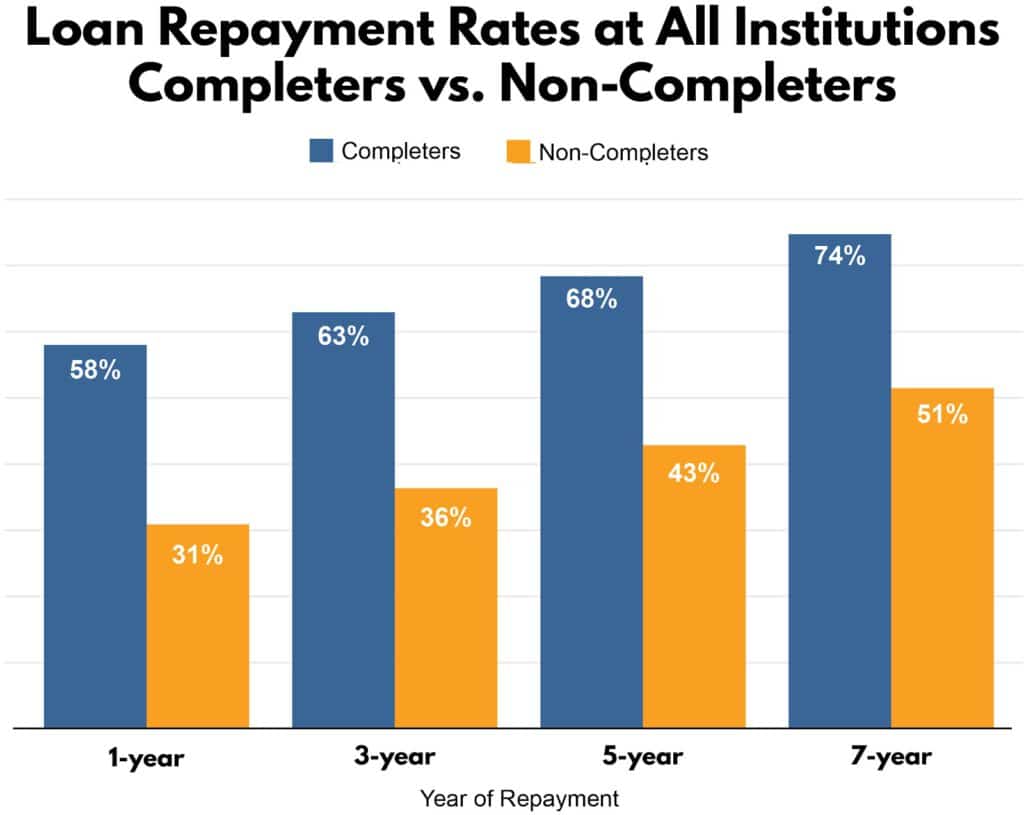Across the campaign trail, we are seeing myriad variations of “free college” proposals. The intentions aren’t bad: provide a solution to the record $1.5 trillion in student loan debt. But what the promise of free college fails to consider, as The Hechinger Report astutely notes, is not just whether it expands access to those who need it most, but also whether a narrow solution to tuition cost ignores the more critical question of value.
In Hechinger’s article, Tiffany Jones, director of higher education policy at the think tank Education Trust, argues that what the “free college” promise “…does allow is for folks to win by saying, ‘We’ve done free college.’ But in actuality, they haven’t necessarily made a difference for the students who struggle the most to pay.”
Expanding access
The details of free college programs and proposals vary widely. But typically, they only cover tuition—not fees or living expenses. They often only address full-time enrollment—not part-time enrollment, which excludes millions of current and potential students. Taken together, these two factors mean that most working adults will likely be shut out of the program, even though many of the programs have no official age requirements.
While progressive politicians are the most likely suspects to support free college, many of these policies are in fact regressive: they are usually last-dollar programs which will direct marginal funds to middle- and upper-middle-class families, rather than helping poor and working-class students defray more of the full cost of attendance.
As a variety of studies have pointed out, the needs of college students aren’t always purely academic; they often include basic needs like food, shelter, childcare, and healthcare. Many schools take the perspective that these needs are outside the purview of their institutions—but the result is that students are far less likely to succeed in college if they are homeless or hungry. In the long run, if schools ignore these circumstances, both students and colleges lose. And if policy also doesn’t address the needs of the whole student beyond just tuition costs, the promise of “free college” falls a bit flat.
Luckily, some colleges are making strides in this direction, like Jackson College, a community college in Michigan with 7,000 students, that partners with community businesses to provide student access to healthcare services.
Recently, WSU Tech, the largest technical college in Kansas, created the Wichita Promise Move to help build a pipeline of skilled graduates to local aviation jobs. Wichita Promise Move is a last-dollar scholarship that covers tuition and fees beyond what federal aid covers. But the program also pays for relocation and housing and furniture expenses for students who move to the Wichita area from more than 50 miles from the campus; provides a weekly stipend that can help them pay for other living costs such as gas or daycare; provides a shuttle to help students get to classes; and guarantees graduates a job interview with Spirit and Textron. Every student who received the scholarship last year was hired by one of the companies.
Because of the high cost of funding the program, which costs the college about $8,000 per students, WSU Tech aims to collect more data on the success of graduates once they are placed in these jobs so they can show potential funders the program’s worth.
Funneling dollars toward programs that truly expand access, and then placing graduates in jobs that have a high ROI, could be a better strategy than simply offering free tuition.
Debt isn’t just about cost—it’s about value
College costs are an issue across higher education, but the student debt crisis is focused squarely on two groups of students: those who do not complete college, and those who complete degrees or earn credentials that have little to no value in the labor market.
Over 40 percent of students who enroll full-time at four-year institutions won’t graduate in six years. The rates are dramatically worse for students who enroll part-time. A report from Third Way demonstrates the consequences: students who don’t graduate have a very tough time paying back their student loans. After seven years, only half of those who had started college and not finished had made a dent in paying down any principal on their student loans—meaning they owe more seven years after leaving college than they did on the day they dropped out.

Majors and cost of programs are also increasingly important. The highest default rates on student loans are actually those who owe the least—less than $5,000. Although there are always exceptions, borrowers with high-debt balances also tend to be very high earners who racked up big balances paying for law school, business school, or medical school. High-cost programs that lead to high-debt balances aren’t tremendously problematic as long as they have a significant return on investment.
The big problem is when high tuition doesn’t lead to high earnings—or when programs don’t retain students through to graduation. Refocusing colleges on completion, high-value degrees, and offering career placement services would pay huge and immediate dividends to students, their families, and our society.
A broken business model
Behind the ever-rising tuition bills that families are struggling to pay lies an even more unpleasant truth: the basic business model of college is broken. Costs are high and continue to rise well above the rate of inflation, in part because “college” combines multiple complex business models, including teaching, research groups, hospital systems, and preparing students for life and careers. For decades, institutions were able to raise revenues year after year to keep pace with expense growth, but the public is quickly reaching its limits. Families just can’t afford to pay any more than they already are, hence, the political momentum behind “free college.”
In other words, student loan debt is a symptom of a much larger problem: traditional higher ed’s problematic business model.
Subsidizing access to a broken system doesn’t fix the system. Who should pay for education is an important policy question, but it can’t be used to cover up or avoid dealing with the issues of why college is so expensive in the first place. “Free college” may score votes, but it doesn’t solve problems. Closing the gap between higher education and high-quality employment opportunities does.



